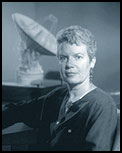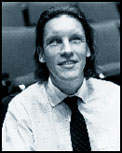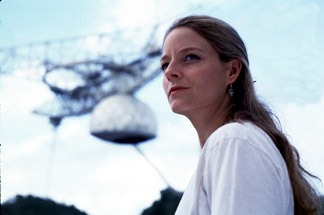
You can get to the original of this page at http://www.seti-inst.edu/phoenix/contact.html
|
|

|
 "Contact" the Movie Ellie's search is real. But we don't use head phones. |
| Ellie Arroway (Jodie Foster), the heroine of the movie "Contact," finds an alien broadcast in much the same way that Project Phoenix operates. Phoenix is searching for signals from the directions of about 1,000 nearby, sun-like stars. There are other SETI experiments underway, but Project Phoenix is the only systematic targeted search of individual stars, the type of search conducted in the movie. |
 Much as in the movie, Project Phoenix's director is a female, Ph.D. astronomer named Jill Tarter. However, Jodie Foster's character Ellie is not directly based on Jill. "Carl Sagan wrote a book about a woman who does what I do, not about me," explains Tarter. "He did his homework, and thus included many of the `character-building' experiences that are common to women scientists studying and working in a male-dominated profession, so Ellie seems very familiar to me. " |
 Another reality-inspired character in the movie is the blind researcher, Kent Clark. The Project Manager of Project Phoenix, and the leader of its signal detection team is a blind Ph.D. physicist named Kent Cullers. According to Cullers, "An early version of the screenplay included a small part for which I was judged competent enough to play myself. However, as the part expanded, it required the skills of a real actor." |
 Science Fact and Science Fiction How well did the movie stand up to real SETI science? |
|
||||||||||||
|
Related topics: |